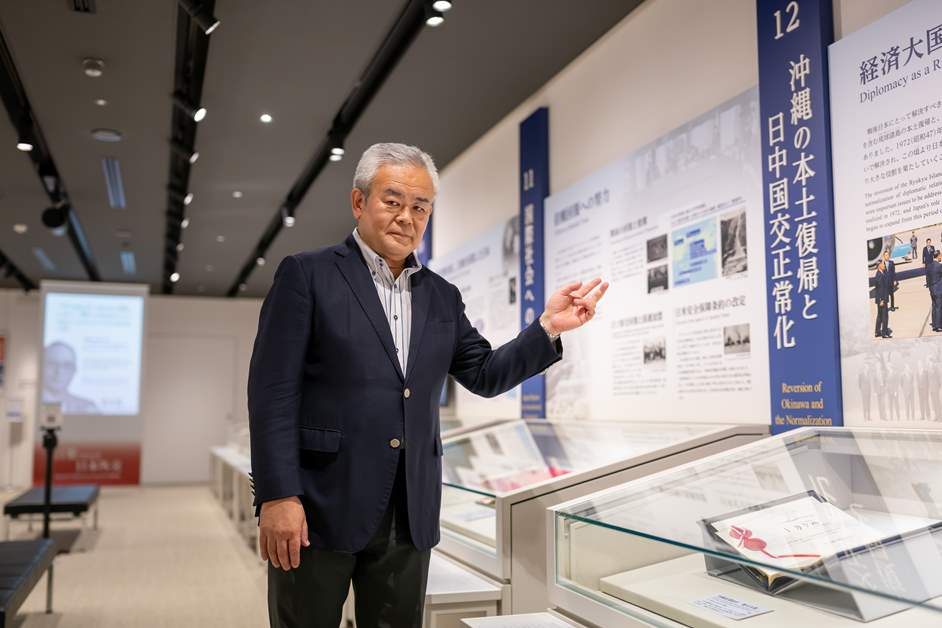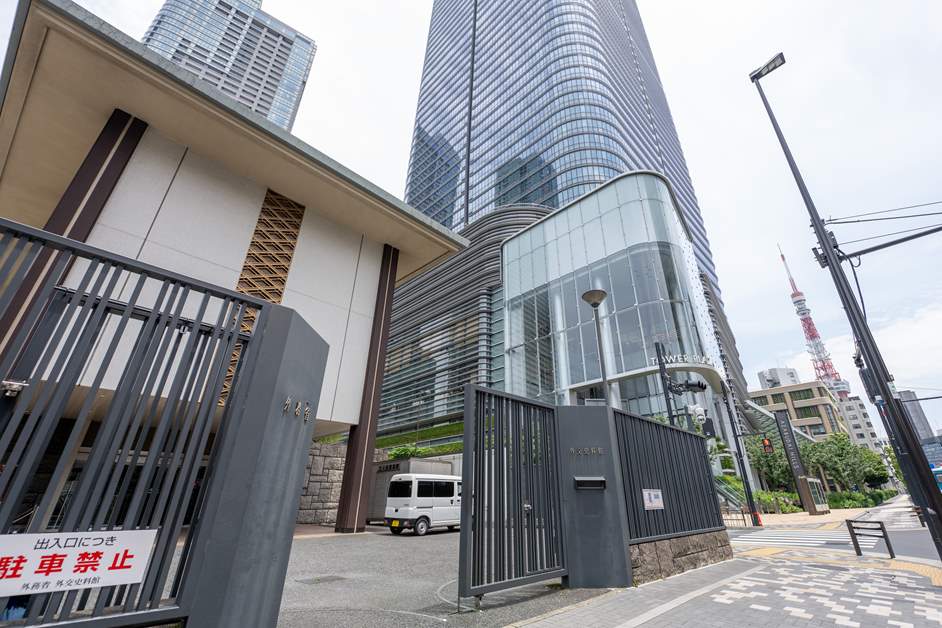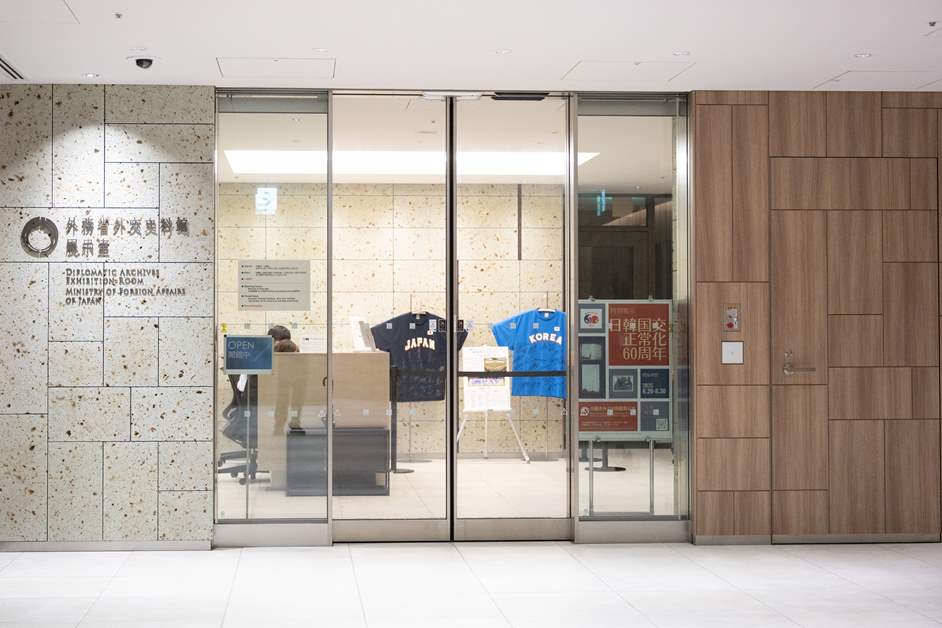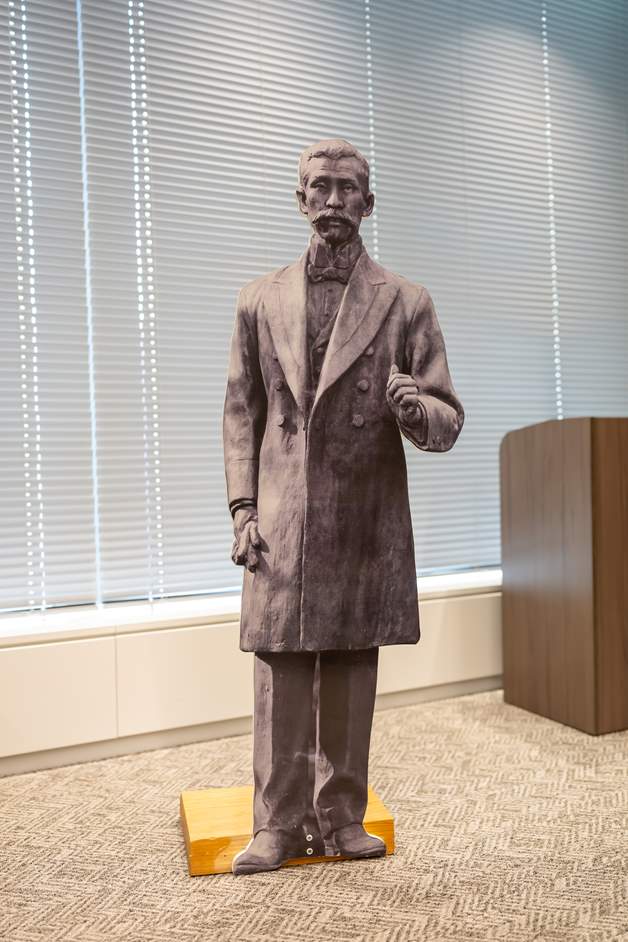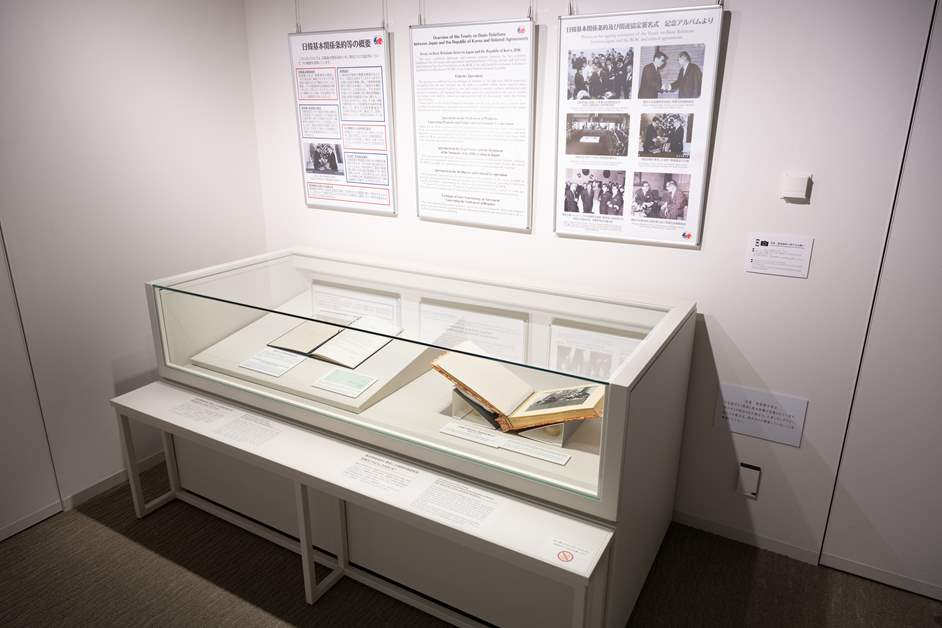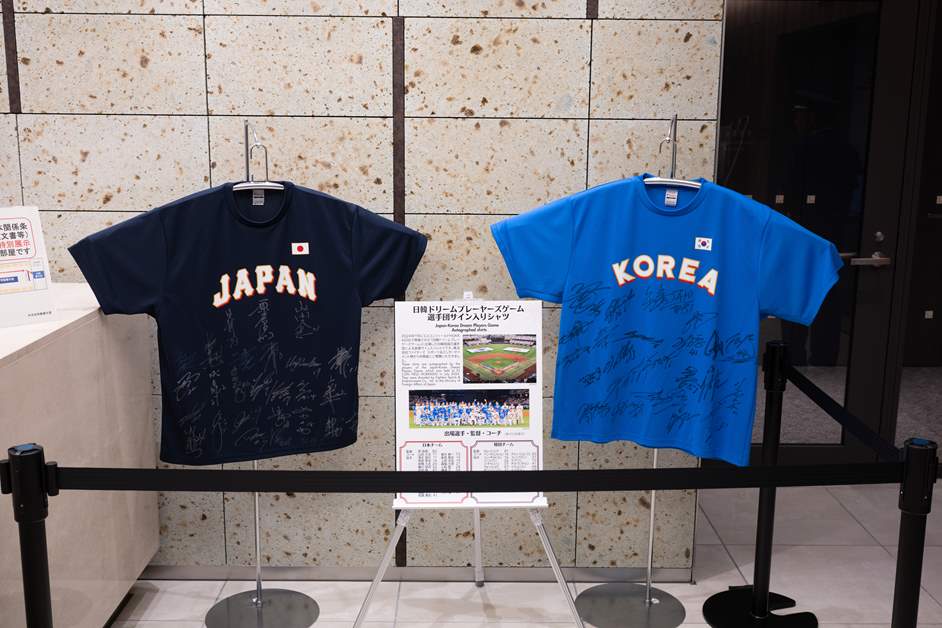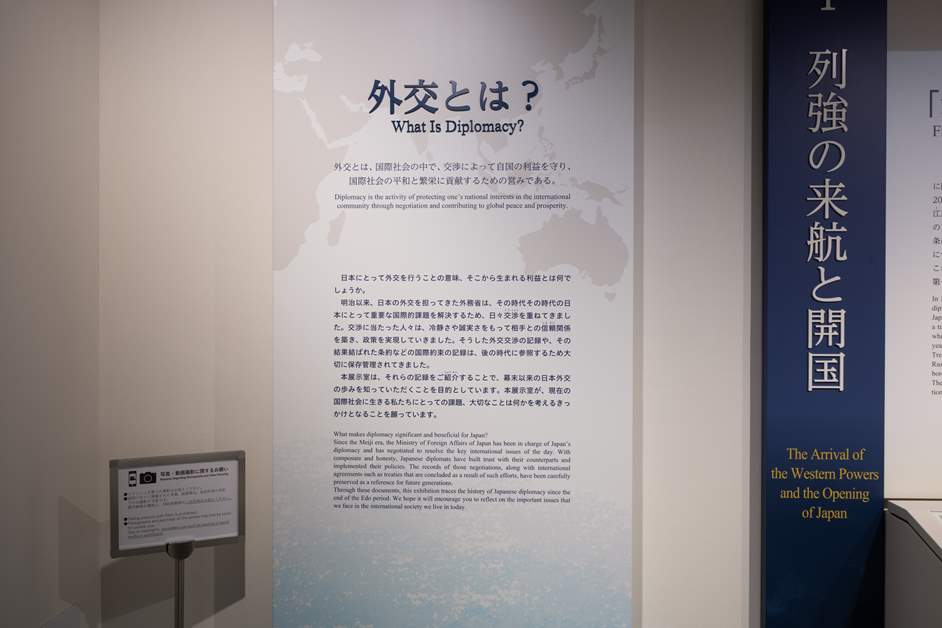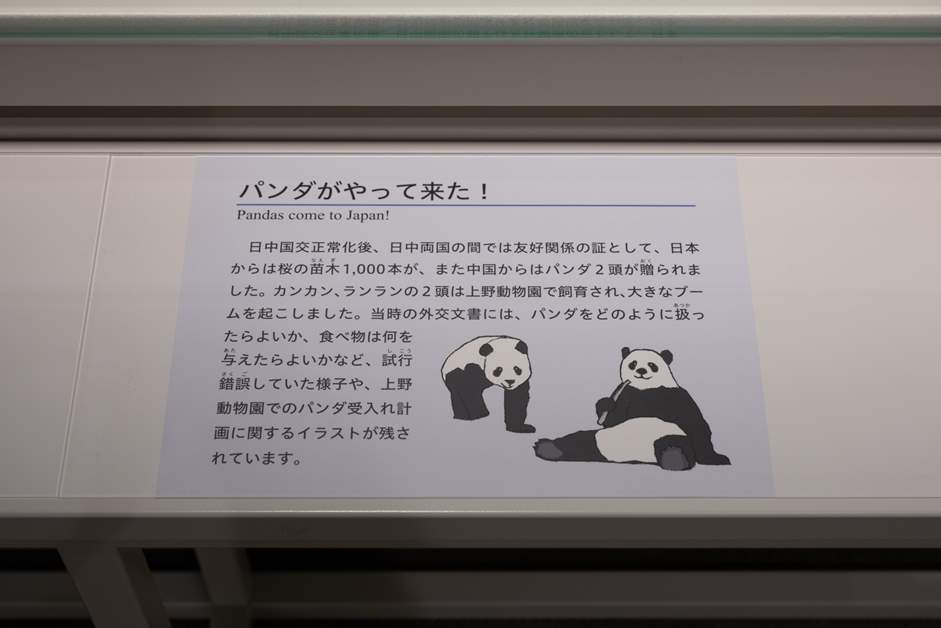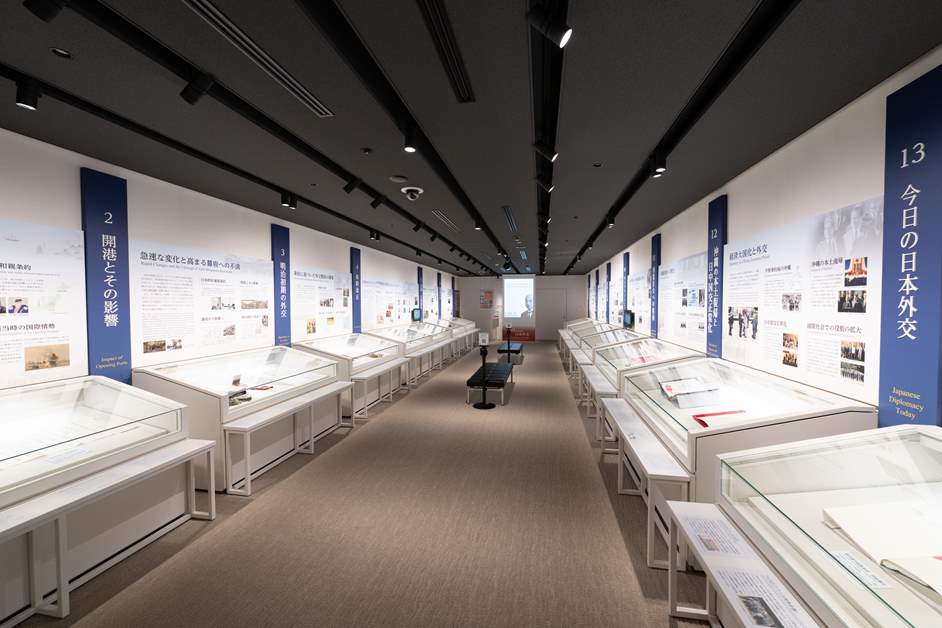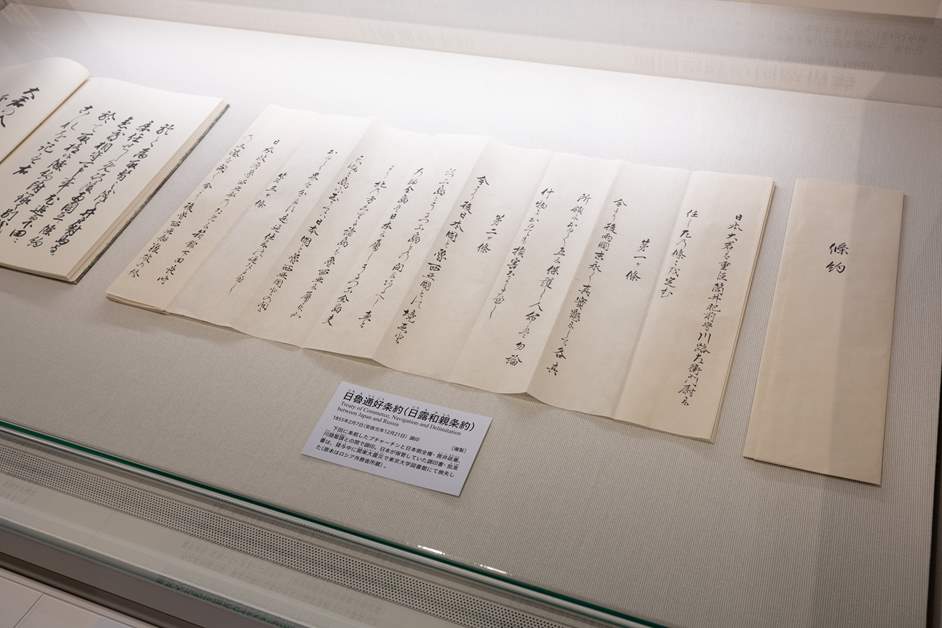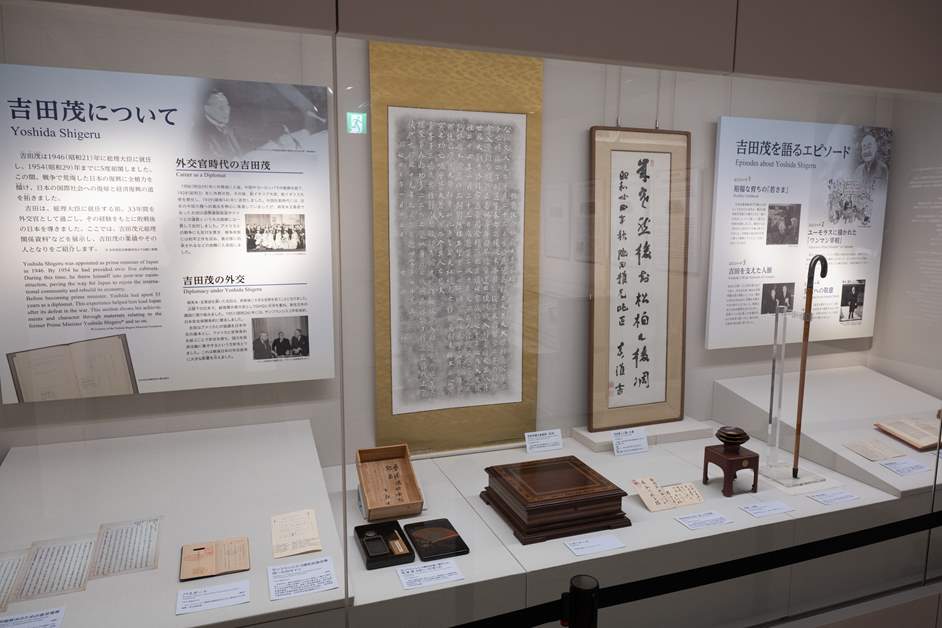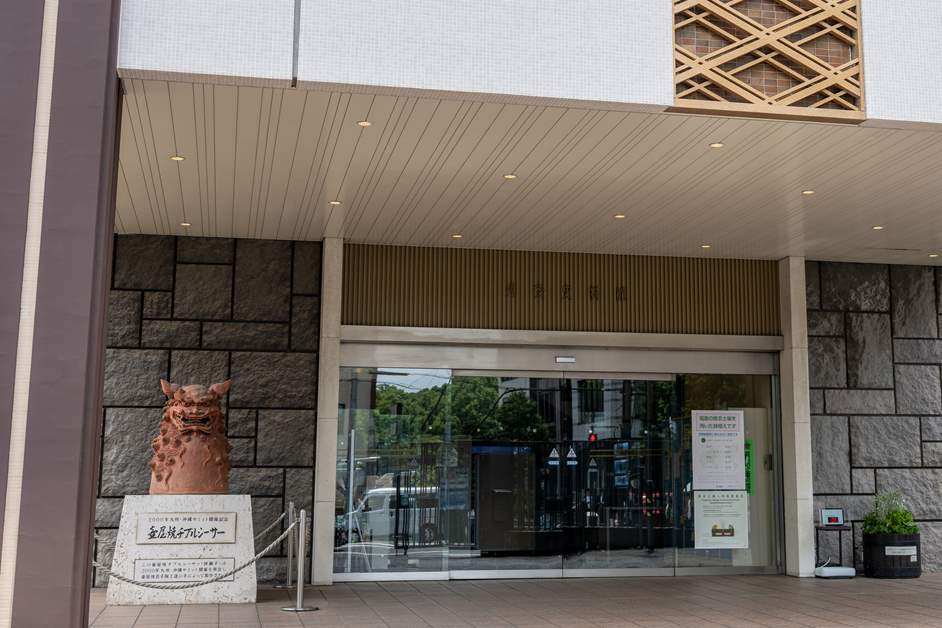Exhibition Room Reopens in Azabudai Hills! What the Diplomatic Archives Conveys
Relocation Leads to a More Than Tenfold Increase in Visitors!
Relocation Leads to a More Than Tenfold Increase in Visitors!
The Diplomatic Archives was established in 1971 in Azabudai 1-chome, Minato Ward, along with the Iikura Public Hall, where the Minister for Foreign Affairs holds meetings and receptions. The exhibition room was open to the public in a separate annex on the premises, but access was not very good, and it also had issues from a barrier-free perspective. Incidentally, the annex was donated in 1988 by the then Yoshida Shigeru Memorial Foundation, along with related materials of former Prime Minister Shigeru Yoshida. Amidst this situation, a redevelopment project emerged in the district right next to the Diplomatic Archives, and we received a proposal for a 'right conversion' from the redevelopment association. A right conversion refers to replacing existing land rights with new rights. In other words, in exchange for providing a part of the Diplomatic Archives' land for a public road, the Ministry of Foreign Affairs acquired the rights to the 5th-floor of the newly built Azabudai Hills Mori JP Tower. The exhibition room from the annex was then moved to that 5th-floor space.
The entrance to the exhibition room on the 5th floor.
The Diplomatic Archives has a role to share the records of Japan's diplomacy with the public and pass them on to the next generation. However, as I mentioned, the previous exhibition room was not necessarily able to fully fulfill that role due to access and barrier-free issues. By moving to Azabudai Hills Mori JP Tower, the tallest building in Japan which many people visit, the number of visitors has increased more than tenfold compared to the previous exhibition room. I believe this is the greatest effect.
Since the reopening, we've continued to welcome visitors, surpassing 20,000 people on June 6, 2025. To share diplomatic records with the public, we want as many people as possible to visit. Of course, we want to continue increasing visitor numbers, but I am proud to say that for a public facility run by a national government agency, this is quite a respectable figure.
We have visitors from a wide range of generations, but recently, we've seen many groups of students from about the 6th grade of elementary school to the 3rd year of junior high school coming to learn as part of their school activities. We, too, want more young people to visit in order to pass on diplomatic records to the next generation, so we are undertaking initiatives where we talk about diplomacy while they view the exhibits. In the multipurpose space adjacent to the exhibition room, we sometimes hold mini-lectures for student groups. In these lectures, we might ask a quiz question like, 'There was once a Foreign Minister named Komura Jutarō. How tall was he?' We also have a life-sized cutout of him, and children delight in taking commemorative photos with it.
A life-sized cutout of Komura Jutarō, a Meiji-era diplomat who served twice as Foreign Minister.
From the end of the Edo period to the Meiji era, Japan was forced to conclude unequal treaties with the great powers. The revision of these unequal treaties was the top priority for the Ministry of Foreign Affairs during the Meiji era. Komura Jutarō was a diplomat who dedicated himself to this revision, and he is also famous among past Foreign Ministers for his achievement in leading the Japanese side in the peace negotiations for the Russo-Japanese War. As a representative figure of the Ministry of Foreign Affairs, the Diplomatic Archives received the life-sized cutout, which was made by Nichinan City in Miyazaki Prefecture, Komura Jutarō's hometown.
Yes. Sometimes our facility is included in the itinerary of school trips. I feel that the number of visitors from all over Japan, not just Minato Ward, is definitely increasing. We also have many adult visitors, especially history enthusiasts. Recently, some major travel agencies have been planning tours that include a visit to the exhibition room, targeting history fans, and some people drop by while sightseeing. For group visits, please apply through the Diplomatic Archives page on the Ministry of Foreign Affairs website.
A special exhibition for the "60th Anniversary of the Normalization of Japan-South Korea Relations" is currently being held (Until August 30, 2025).
Azabudai Hills is a tourist destination, so about 10% of our visitors are foreigners. For our overseas guests, we have added English translations to some of the display panels and created an English booklet. However, we only support English at the moment, so we hope to proceed with further multilingual support in the future.
T-shirts signed by both the Japanese and South Korean teams.
The two T-shirts were donated to the Ministry of Foreign Affairs by Fighters Sports & Entertainment Co., Ltd., which operates ES CON FIELD HOKKAIDO, the venue for the game. They are displayed to commemorate the current special exhibition for the '60th Anniversary of the Normalization of Japan-South Korea Relations.' Photography is freely permitted inside the exhibition room, so please take pictures when you visit.
A panel exhibit explaining the meaning of diplomacy.
In addition to traditional diplomacy where countries interact with each other, there is the concept of 'public diplomacy.' 'Public' can be translated as 'general,' and 'diplomacy' means, well, diplomacy. In short, public diplomacy is diplomacy aimed at the general public. Communicating Japanese culture and history, including anime and manga, to the general public overseas is just as important as diplomacy between nations, and it is something that the Diplomatic Archives and our diplomatic missions abroad are focusing on.
Using illustrations and other methods for a clear explanation.
Indeed, because diplomacy is intertwined with historical background, many people do find it difficult. At the Diplomatic Archives, our motto is clarity and accessibility. In this new exhibition room, we've enhanced our explanations with panels and videos, and when explaining the normalization of Japan-China relations, we highlight the arrival of the pandas, all in an effort to create clear and approachable exhibits. Furthermore, Japan's diplomatic history begins at the end of the Edo period. Perry arrived with his 'black ships,' the Ministry of Foreign Affairs was established in 1869, and this history continues through the Taisho, Showa, Heisei, and Reiwa eras. In the exhibition room, we display Japan's diplomatic records in chronological order, so I believe visitors can understand how each past event connects to the present day.
Features of the New Exhibition Room and Initiatives for the Future
The permanent exhibition space where you can trace the history of diplomacy in chronological order.
It's about 1.5 times larger than before. First, there is a permanent exhibition space that traces the history of diplomacy in Japan, and beyond that is a space for special exhibitions. When there is no special exhibition, we display materials related to former Prime Minister Shigeru Yoshida, as well as exhibits on the evolution of Japanese passports. In addition to the larger exhibition space, another benefit of the move is that we were able to install a high-quality air conditioning system. Many of the treaties and related documents we store are old and can be damaged by humidity and high temperatures if displayed for long periods, so we generally exhibit replicas instead of originals. However, we do sometimes exhibit originals, so a proper air conditioning system was necessary. Another major feature is barrier-free access, which the previous exhibition room lacked. You can come in a wheelchair from the entrance of Azabudai Hills all the way to this 5th-floor exhibition room.
The Treaty of Commerce, Navigation and Delimitation between Japan and Russia, written by hand (replica).
Yes. By law, permanent preservation is mandatory. For public documents from other ministries like the Ministry of Finance or the Ministry of Economy, Trade and Industry, they are either disposed of after their retention period or, if kept, transferred to the National Archives of Japan. However, in the case of Ministry of Foreign Affairs documents, because of their relation to other countries, they are treated differently and are stored within our ministry at the Diplomatic Archives. In addition to the Ministry of Foreign Affairs records, we also hold treaties, national letters, personal letters, and a collection of diplomatic documents from the end of the Edo period designated as Important Cultural Properties, amounting to a vast collection. We have archives in the basement of the main building and elsewhere, currently storing about 120,000 items. Also, long before the Diplomatic Archives was established, we began compiling and publishing diplomatic documents as 'Documents on Japanese Foreign Policy,' which now totals 230 volumes and is used by researchers and others.
Director Yamamoto during the interview.
I have worked for the Ministry of Foreign Affairs for over 25 years and assumed the position of Director of the Diplomatic Archives on July 1, 2024. The Ministry of Foreign Affairs has a '30-year rule,' which means that documents are generally made public after 30 years. I have had many overseas assignments in Middle Eastern and North African countries, and it was a deeply moving experience when the documents from the Gulf Crisis, which I was involved in, were transferred from the ministry headquarters to the Diplomatic Archives after 30 years.
Yes. In fact, two heads of state have visited the Diplomatic Archives' exhibition room in the past. In 2019, the President of Lithuania visited the main building, and in 2025, the President of Guatemala visited the new exhibition room after its relocation, where they viewed public documents deeply connected to their respective countries. It was an event where the Diplomatic Archives, which can be called the back office of diplomacy, became a scene of diplomacy itself. We were very pleased that they showed interest in Japan's diplomatic records.
Documents and materials related to former Prime Minister Shigeru Yoshida are also introduced.
Yoko Kamikawa, a member of the House of Representatives who was the Minister for Foreign Affairs at the time, attended the opening ceremony for the relocation and the 'Shigeru Yoshida Exhibition' held from April to the end of May this year. The 'Shigeru Yoshida Exhibition' was a special exhibit to commemorate the first anniversary of the exhibition room's reopening, and former Prime Minister Taro Aso, who is the grandson of former Prime Minister Shigeru Yoshida and also has experience as Foreign Minister, came to see it as well.
Diplomacy is the act of protecting one's own country's interests through negotiation while contributing to the peace and prosperity of the entire international community. Although it is a matter between nations, the ones actually conducting the negotiations are people. There is top-level diplomacy, like between a Prime Minister and a President, high-level diplomacy at the ministerial level, and also the working level, like us. I want to provide explanations that make these aspects visible. Also, it may be too casual, but I think it's easier to understand if we compare Japan's 150-year diplomatic history to a person's life. Japan was a diplomatic infant when it opened its borders at the end of the Edo period, struggled to catch up with the West throughout the Meiji era, became a great power, then entered the Great Wars, and after returning to the international community post-war, it matured through international contributions and other efforts. By devising various ways of communication like this, I hope we can help promote understanding of Japan's diplomatic history.
The main building of the Diplomatic Archives, which houses the reading room.
In the reading room at the main building, we provide viewing and copying services for the pre-war and post-war diplomatic records held by the Diplomatic Archives to those who have completed the registration process. The users are mainly researchers, students, and members of the media. I think a good approach is to first see the exhibition room, and if you want to learn more deeply about diplomacy or see the actual historical materials, then visit the main building next to Azabudai Hills Mori JP Tower and use the reading room.
The Diplomatic Archives' exhibition room, which reopened on April 5, 2024, is located in Azabudai Hills Mori JP Tower, the tallest building in Japan, and is a place where you can experience Japan's diplomatic history for free. We warmly welcome everyone, whether you are interested in diplomacy and history or not. We sincerely hope you will visit us at least once.
Address: 5F, Azabudai Hills Mori JP Tower, 1-3-1 Azabudai, Minato-ku, Tokyo
Hours: Monday to Saturday (10:00 AM - 5:30 PM *Last entry at 5:00 PM)
Closed: Sundays, National Holidays, New Year Holidays (December 28 - January 4), and other specially announced closure days.
Admission: Free
*Please check the official website below for details.




